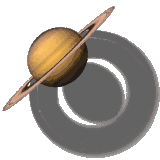Solar System (5th Grade)

One of the 5th grade science stanards is to: "Compare distances from the sun to planets in our solar system." One of the bullets which extends that standards is: Relating the size of Earth to the size of other planets in our solar system." Here is a site that shows you how you can give kids a sense of the sizes and distances you are talking about.
0 Comments:
Post a Comment
<< Home